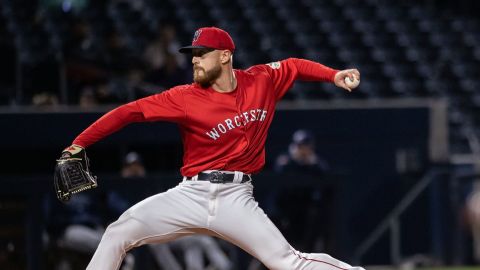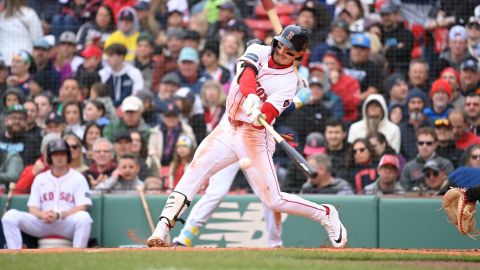 Editor’s note: Michael Narracci is the coordinating director of Red Sox broadcasts on NESN and has spent 14 seasons with the network. This is the third installment of his “Director’s Cut,” a behind-the-scenes look at NESN’s Red Sox game coverage.
Editor’s note: Michael Narracci is the coordinating director of Red Sox broadcasts on NESN and has spent 14 seasons with the network. This is the third installment of his “Director’s Cut,” a behind-the-scenes look at NESN’s Red Sox game coverage.
Broadcasting Red Sox games on the road and at Fenway Park are completely different experiences, for various reasons.
Our home shows are by far better than our road shows because we have more cameras, more tape machines and a bigger crew. The familiarity of our crew with our show also is invaluable. We’ve had just three or four changes in our crew since 2001 when I started, and because we do 75-plus games per year, responsibilities become second nature to everyone.
A new challenge this year is that I’m working with a new producer — just the third in the 14 seasons I’ve been directing Red Sox baseball on NESN. Jim Daddona and I have known each other for about 20 years, and we used to do college basketball and Triple-A baseball together back in the day. It’s fun to work with JD and have him on our crew.
When we’re all on the same page, it shows on air. I’d put the performance of our home crew up against any network crew in the business. These guys and gals are top-shelf professionals who go about their business day in and day out, but we also have a lot of fun together. It’s a long, grinding season, and the good-natured ribbing that goes on behind the scenes makes it palatable. I’ve always said that if I ever got to travel my own personal crew on the road, it’d be comprised of every single member of our Boston crew.
As a side note, I came up through the business with most of these guys. I worked full time for Heritage Cablevision in Rhode Island in the early ’90s with Joe Stafford (Camera 3), John Carolan (Camera 2) and Ken Boyd (Camera 4). Coincidently, we provided technical positions and facilities for NESN’s coverage of college sports at that time. I even served as technical director for NESN Bruins director Rose Mirakian, who was cutting her teeth on Hockey East coverage. The rest of the guys were on various freelance crews that I worked on when I was a tape operator.
On our home show, we have between 12 and 14 cameras. That includes the traditional six cameras — low third base, high home plate, high first base, low first base and two in center field. We’ve also added these specialty cameras:
· Left field above the Green Monster
· Right field robotic that is mounted on the wall between the bullpens
· Mid-home robotic mounted on the backstop
· Mid-first looking up the third base line from the back of the grandstands
· A robotic inside the Green Monster
· A booth robotic to shoot Don Orsillo and Jerry Remy
· A blimp for about 20 games per year
The mid-home robo is one of my favorite looks at a baseball field. The right field robo also is right up there. It gives you the feel of being the right fielder or a bullpen catcher.
Fenway Park presents some unique challenges in game coverage. The angle of the left field corner prevents you from staying on the high home “shag” camera for balls hit there. I have a split-second decision to make as to if the ball will be tight enough to the wall, necessitating cutting to Camera 3 (high first) so you can see if the ball lands fair or foul. The right field corner presents the same challenge when a ball hugs the wall. I have to cut to Camera 7 (left field) to see the ball rolling along the wall.
The low cameras also present challenges when shooting men on the infield, such as the shortstop, second baseman and a runner at second base. Sometimes I can’t see a runner at second from either of my dugout cameras because of a “sea of humanity” (other players, umpires, etc.) between the camera and the runner. It’s very frustrating because you’re waiting and hoping for the blockage to move, but you’re also sending one of the “Up” cameras to the runner.
All in all, though, it’s a privilege to be part — albeit a small one — of NESN’s Red Sox broadcasts and to experience one of their most prolific eras of this franchise, with three World Series titles in 10 years.



